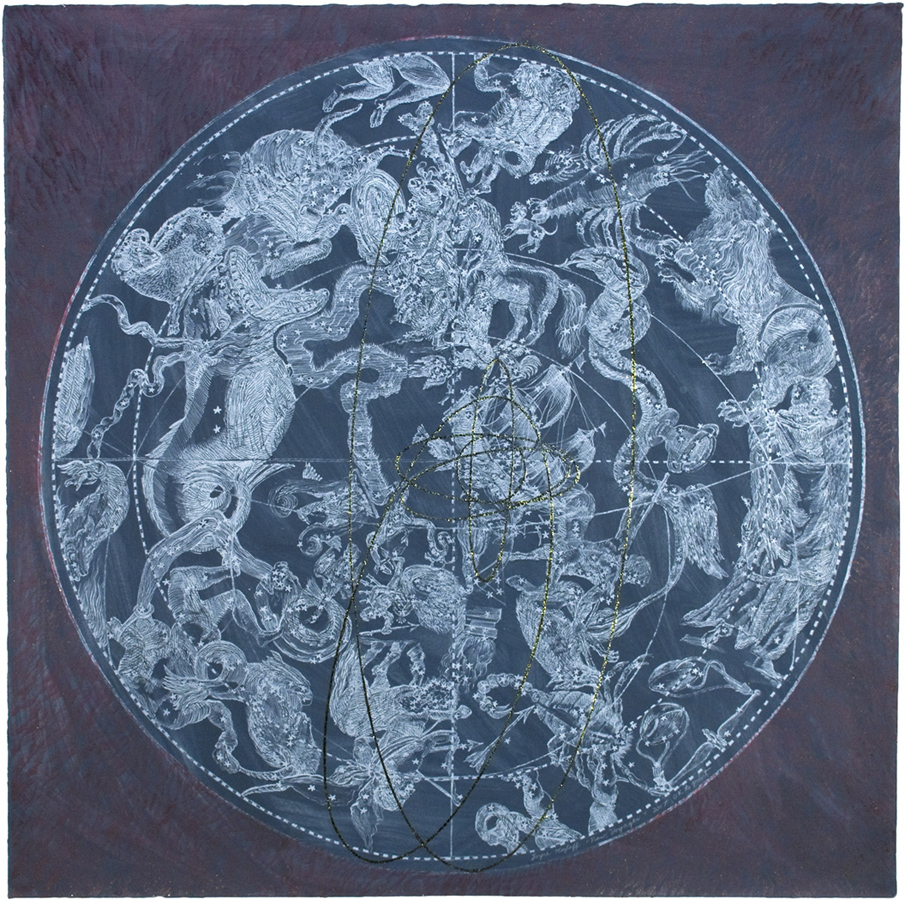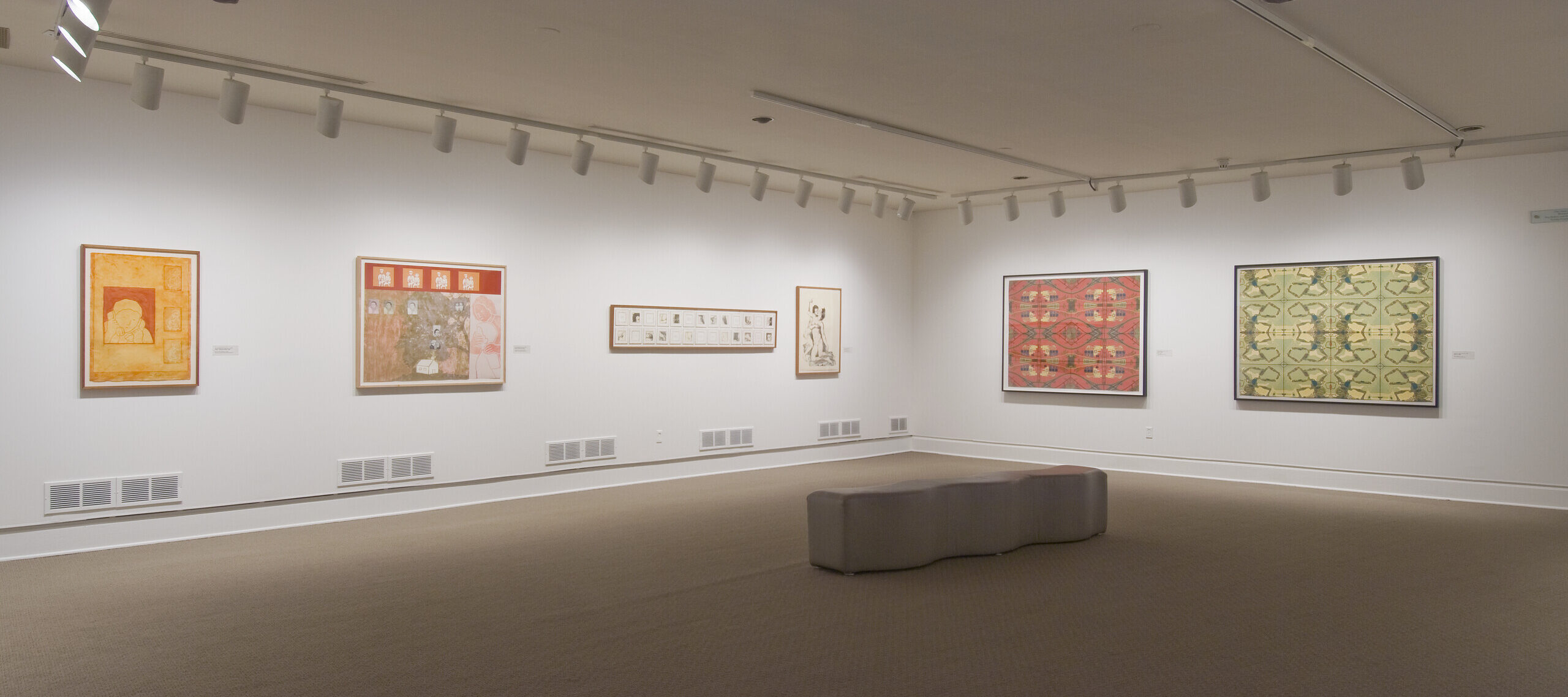
If I could be an artist, I would want to be Joyce Kozloff. Her work draws on maps, illuminations, historical manuscripts, and website imagery, always delighting the eye with decorative motifs, and a tempest of color and compositional dynamism. Kozloff’s work never bores, which is likely why she has successfully won public art competitions for densely populated spaces, including San Francisco’s International Airport and the Harvard Square T stop. Kozloff’s public art awakens space and engages a never-ending stream of viewers, who benefit from a vibrantly tiled fantasy in their midst.
An artist who embraces history, philosophy, and science, Kozloff’s vision retains the values of her early feminist consciousness-raising. Miriam Schapiro challenged Kozloff to think hard about how her art could contribute to changing attitudes about gender, art, and artists. As tough as it was in the early 1970s to be a young mother, wife of an academic, and a professional painter, Kozloff immersed herself in the substantial Los Angeles community of activist women artists and art historians who clambered for change.
This is living history: a young artist absorbed by grassroots political action that took the form of women’s arts groups and a memorable startup brunch that included June Wayne, Moira Roth, Clare Spark, Miriam Schapiro, Judy Chicago and Beverly O’Neill. Kozloff hosted the first Los Angeles Council of Women Artists meeting in her apartment and to her surprise about 65 women showed up, including June Wayne who suggested that she apply to work at the Tamarind Lithography Workshop. How would she balance that against her responsibilities as a wife and mother of a young child? The sheer force of Kozloff’s opinionated colleagues firmly pushed her to Tamarind in 1972 where she created her first professional portfolio of prints.
The physicality involved in printmaking, lugging stones, cranking presses up and down, using large rollers, made printmaking workshops historically a masculine domain. Kozloff suggested to her old art school roommate, Judith Solodkin, also a painter, that she might want to apply to Tamarind. Solodkin did, and became the first woman to graduate from Tamarind as a Master Printmaker. Kozloff emphasized in no uncertain terms that Solodkin broke the glass ceiling where women and printmaking are concerned. Kozloff also set a new benchmark of sorts for Tamarind by using an astounding 29 different colors in her prints. And after she departed, Tamarind included a clause limiting the number of colors an artist could employ.
Back in New York City, Solodkin intrepidly set up shop in her small apartment. Kozloff remembers Solodkin hanging a large sign with gold lettering on her front door: SOLO. Kozloff was one of the first artists to work with her. They produced the series Pictures and Borders in 1977 followed two years later with Is it Still High Art? In more recent years Kozloff has looked heavenward for inspiration, creating prints at Solo based on historic cosmological maps and contemporary weather satellite photographs of the earth. But it is Solodkin who guides the process translating her friend’s conception into earthly delectation.
